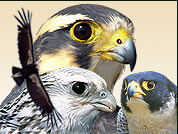 |
 |
|
Home | Species Database | Species Accounts | Bibliography | Researchers | Related Sites | Login |
|
||||||||||||||||||||||||||||||||||||||||||||||||||||||||||||||||||||||
|
Home | Species Database | Species Accounts | Bibliography | Researchers | Related Sites | Login |
| Copyright © 1999-2012 The Peregrine Fund. All Rights Reserved. |